From the ancient board games of Asia to the lively outdoor games of Europe and the innovative card games of America, these activities offer more than just entertainment. They play a significant role in education, foster social interactions, and provide insights into the cultural values of different societies.
In this overview created by Remitly, you’ll find traditional Filipino games, classic British games, ancient Indian games, traditional Korean games, and so many more.
Let’s start with a list of the most popular games and sports worldwide.
Get to Know 37 Traditional Games
Have you ever played any of these games? Chances are, you’ll recognize more than a few, while others will be completely new to you.
Achi (Ghana)
- How to Play: Achi is played on a 3×3 grid, similar to Tic-Tac-Toe. Each player has four pieces. The game begins with an empty board; players take turns placing their pieces on the board, one at a time. The aim is to form a row of three pieces along any line drawn on the board. Once all pieces are placed, players then take turns moving one of their pieces along a line to an adjacent empty spot to form a line of three.
- Fun Fact: The name “Achi” is derived from the Akan language, spoken in Ghana, and means “to come” or “to arrive,” symbolizing the movement of the pieces as they strategically advance across the board.
Australian Football
- How to Play: A fast-paced game played on an oval field where players kick, pass, and bounce a football, aiming to score points by kicking the ball between goal posts.
- Fun Fact: It’s commonly called “Aussie Rules” and is considered the national sport of Australia, with its origins dating back to 1858.
Backgammon
- How to Play: Two players move their fifteen pieces according to rolls of dice across twenty-four points on the board, aiming to bear off all pieces first.
- Fun Fact: The oldest known backgammon board was found in Iran and is over 5,000 years old. It’s one of the traditional games from antiquity that persists today.
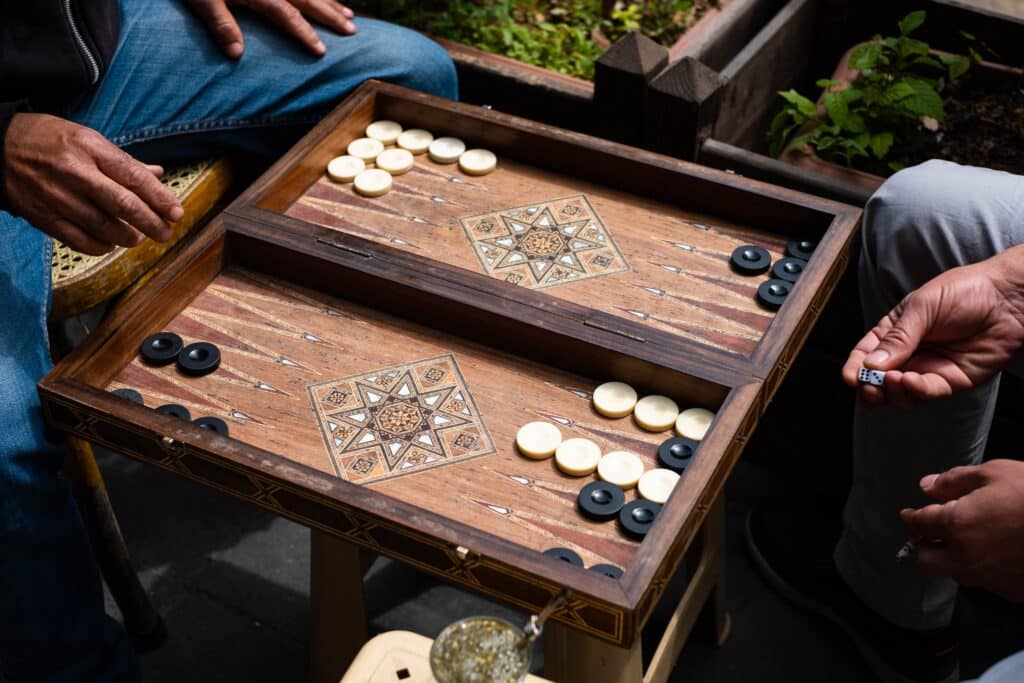
Bandy
- How to Play: Often described as hockey played with a ball on a field of ice about the size of a football pitch, teammates use sticks to direct the ball into the opposing team’s goal.
- Fun Fact: Bandy is one of the oldest sports in the world and was considered for inclusion in the 2014 Winter Olympics.
Billiards
- How to Play: Billiards encompasses several cue sports, including pool, snooker, and carom billiards, each with its own rules. Generally, the games involve using a cue stick to strike billiard balls and move them around a cloth-covered billiards table bounded by rubber cushions. The objective varies by the type of game.
- Fun Fact: The term “billiards” comes from the French word “billart,” meaning wooden stick, and “bille,” meaning ball. The game has evolved significantly since its inception in the 15th century, believed to have been played by nobles as an indoor version of croquet. King Louis XI of France had the first known billiard table.
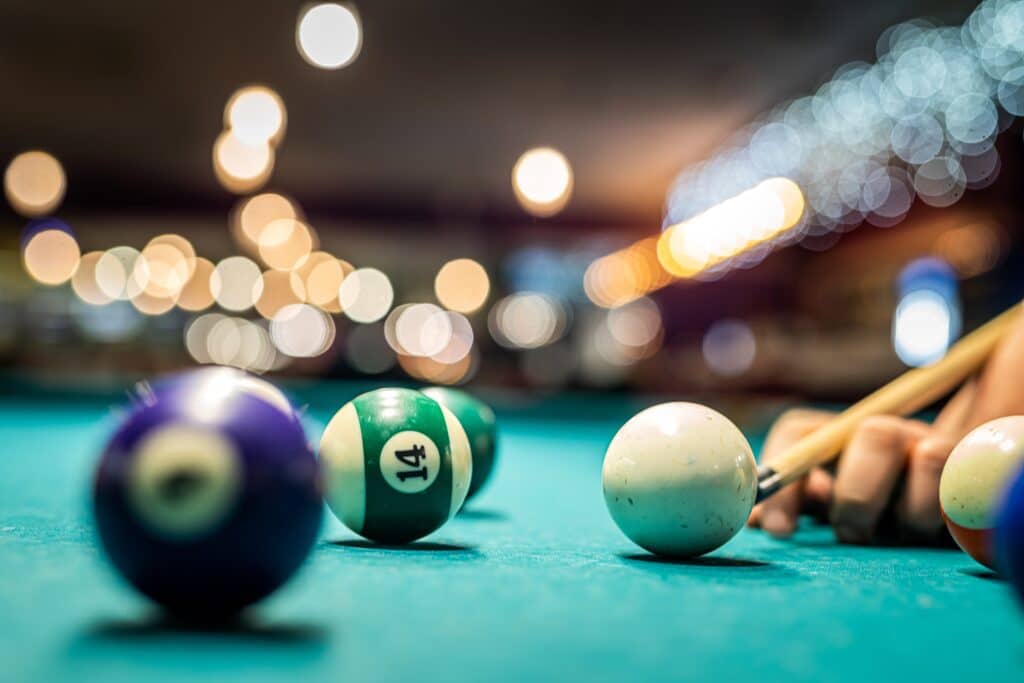
Carrom (India)
- How to Play: Carrom is a tabletop game of Indian origin that is played by flicking a striker disk with the finger to push small wooden disks into corner pockets.
- Fun Fact: Carrom boards are known for their smooth surface, which is often sprinkled with a fine powder to reduce friction and improve the gameplay experience.
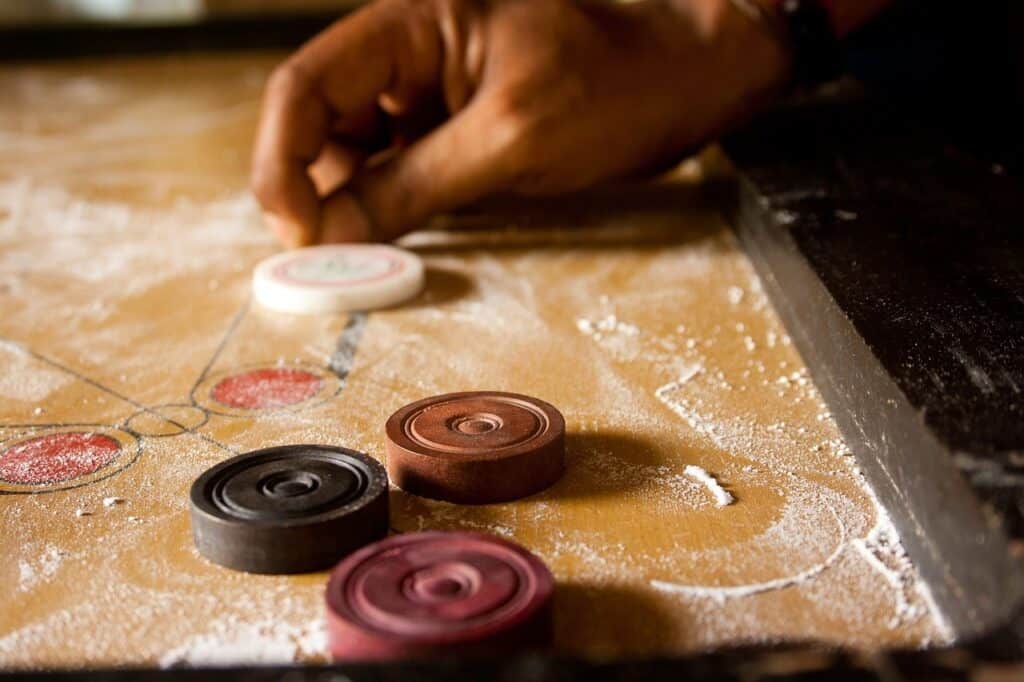
Chess
- How to Play: A two-player strategy game where each type of piece moves in a specific way, with the ultimate aim to checkmate the opponent’s king.
- Fun Fact: Chess is believed to have originated in India, from where it spread to Persia and then to the rest of the world.
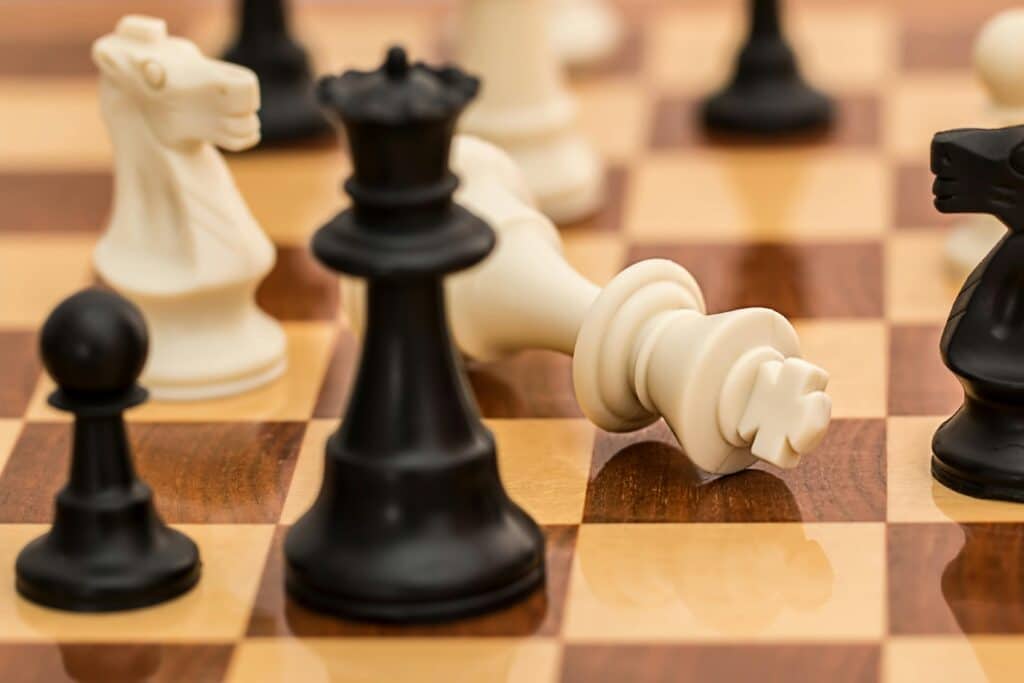
Chinese Checkers
- How to Play: Despite its name suggesting otherwise, this game does not originate from China but from Germany. Players aim to move all their pegs into the triangle directly opposite from their starting position, using single-step moves or moves that jump over other pegs.
- Fun Fact: The game was first known as “Stern-Halma,” as it is a variation of the American game Halma but played on a star-shaped board composed of triangles.
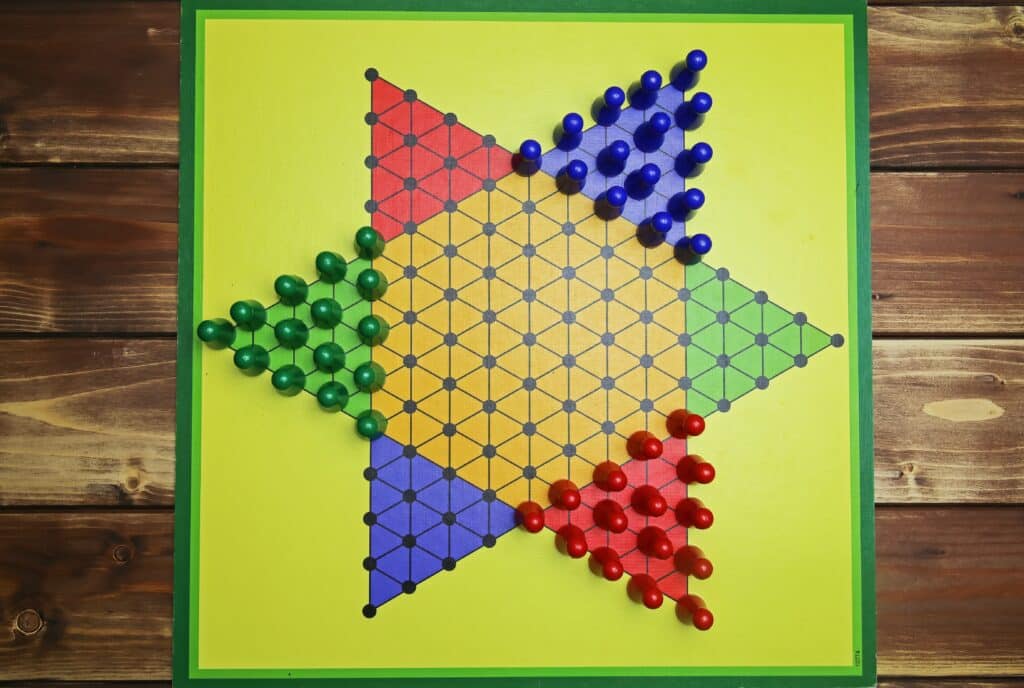
Cribbage
- How to Play: This card game involves grouping cards in combinations to score points, which are recorded on a special wooden board called a cribbage board.
- Fun Fact: An early European game, cribbage was created by the English poet Sir John Suckling in the early 17th century.
Croquet
- How to Play: Players take turns hitting wooden balls with a mallet through hoops stuck in the grass playing field.
- Fun Fact: Croquet was once banned in Boston in 1890 because it was believed to be a cause of immoral behavior.
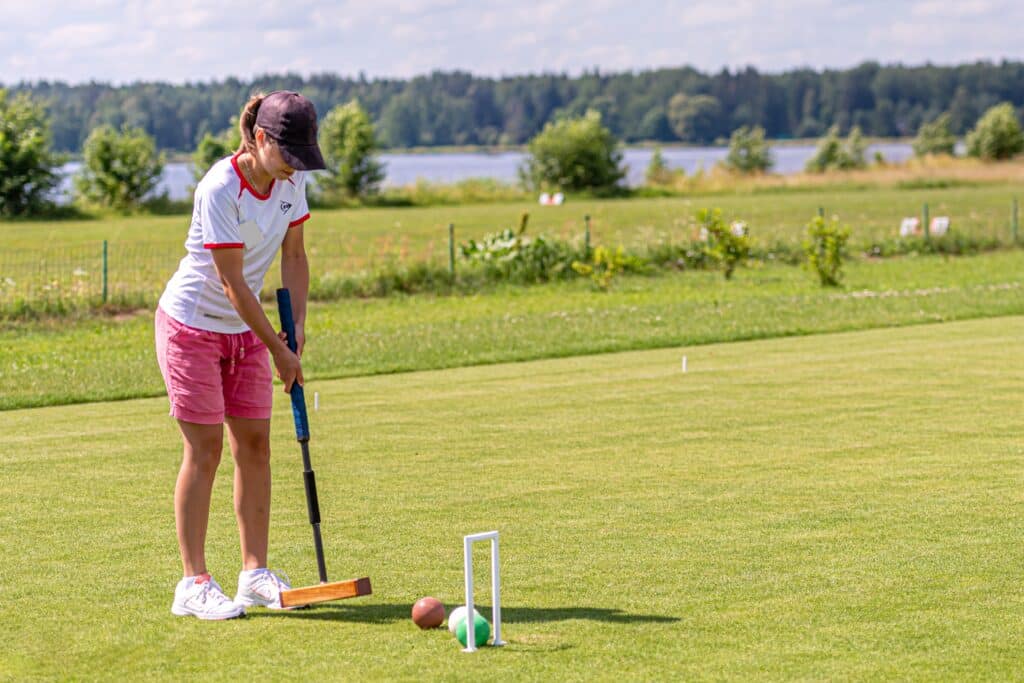
Đá Cầu (Vietnam)
- How to Play: Đá Cầu, known as shuttlecock kicking, involves players keeping a feathered shuttlecock off the ground using their feet and other parts of the body except for their hands.
- Fun Fact: Đá Cầu is considered the national sport of Vietnam and is often played in public parks and gatherings. It’s recognized by UNESCO as a cultural heritage sport.
Dominoes
- How to Play: Players place domino tiles on the table in turn, matching one side of their tile with another that has the same number of dots.
- Fun Fact: The heaviest domino tile was made out of cement and weighed over 1,000 pounds.
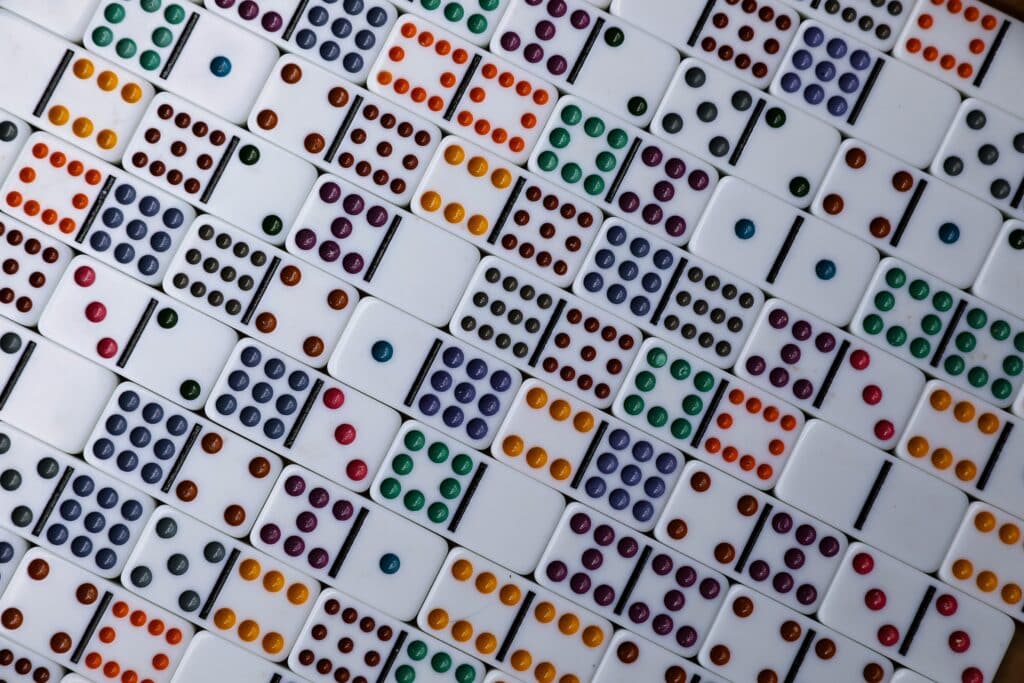
Gonggi (Korea)
- How to Play: Gonggi is similar to the Western game of jacks. It involves tossing and catching small stone-like objects called “gonggi stones.” The game is typically played with five stones. The player tosses all the stones on the ground, picks one up, and then tosses it in the air. While the stone is in the air, the player must pick up another stone from the ground and catch the tossed stone, all with one hand. The game progresses through various levels of difficulty.
- Fun Fact: Gonggi is extremely popular among children in Korea and is often played during recess at schools or in neighborhood playgrounds.
Hopscotch
- How to Play: Hopscotch is a popular playground game where players toss a small object (like a stone, beanbag, or shell) into numbered spaces of a pattern drawn on the ground. Players then hop or jump through the spaces to retrieve the object, only stepping in the designated squares and avoiding lines.
- Fun Fact: Hopscotch can be traced back to Roman times when soldiers played it as a training exercise. The game’s course and hopping motion helped improve their footwork and endurance.
Hurling (Ireland)
- How to Play: An ancient Gaelic game played with a stick called a hurley and a ball known as a sliotar, with the objective to score points by sending the ball over the opponent’s crossbar or into a net guarded by a goalkeeper.
- Fun Fact: Hurling is over 3,000 years old, making it one of the oldest field games in the world and it is the fastest field sport on grass.
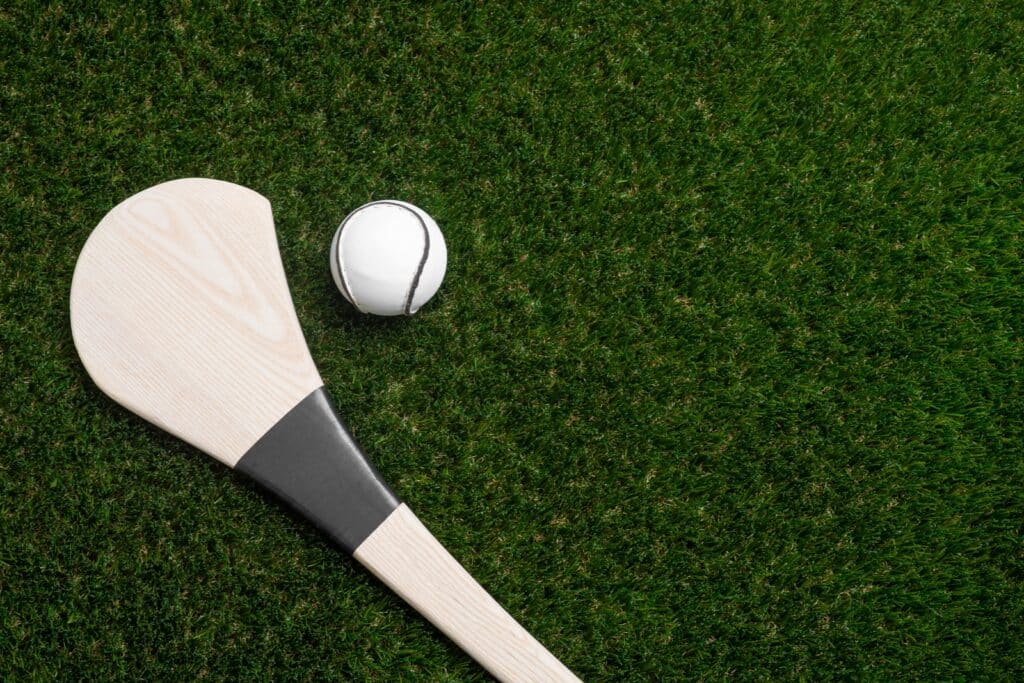
Kabaddi (India)
- How to Play: This team sport requires players to raid the opposite team’s half of the court to tag opponents without taking a breath.
- Fun Fact: Kabaddi is the national game of Bangladesh and a popular sport in the Indian subcontinent.
Kendama (Japan)
- How to Play: Kendama involves a ball connected by a string to a handle with three cups and a spike. The objective is to catch the ball in one of the cups or on the spike through a variety of trick sequences.
- Fun Fact: Kendama has evolved into a modern competitive sport in Japan, complete with player rankings and international championships.
Kilikiti (Samoa)
- How to Play: Similar to cricket, Kilikiti is a traditional Samoan game that involves batting and bowling with teams competing to score the most runs.
- Fun Fact: Kilikiti is typically played during festive gatherings in Samoa with players often dressed in traditional lavalavas (sarongs).
Knucklebones (or, Jacks)
- How to Play: Originally played with the anklebones of a sheep or goat, Knucklebones is a game where each of the bones is assigned a value, and players toss and catch them in various manners to score points. The modern version is often played with small metal or plastic jacks.
- Fun Fact: Knucklebones is one of the oldest games known to humanity, with origins tracing back to ancient Egypt and Greece. It was not only a children’s game but also used for divination and magic rituals. The game has also been called “osselets” or in Haitian Creole, simple “osle.”
La Loteria (Mexico)
- How to Play: A traditional Mexican game of chance, similar to bingo, but using images on a deck of cards instead of numbered balls.
- Fun Fact: La Loteria is often played at Mexican festivals and is used as a tool to teach language, history, and art.
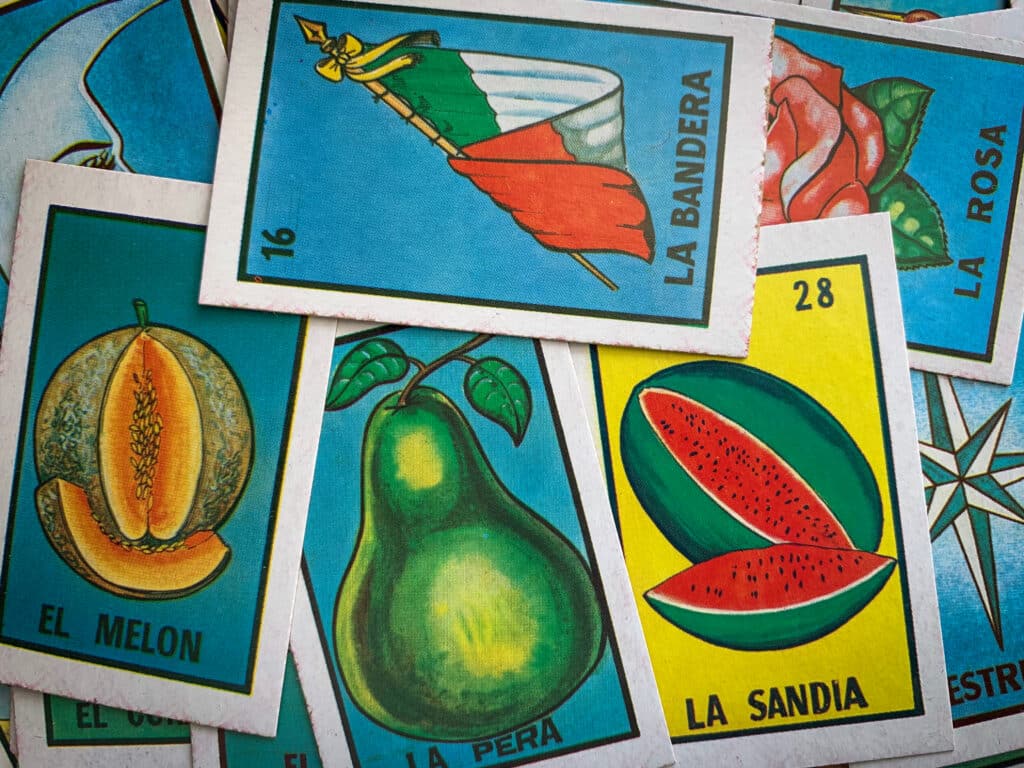
Mahjong
- How to Play: Players draw and discard tiles until they can form a hand with four melds (sets of three) and a pair using strategic skill and luck.
- Fun Fact: Mahjong is a highly popular game in China, often associated with gambling and sometimes played during Chinese New Year celebrations for good luck.
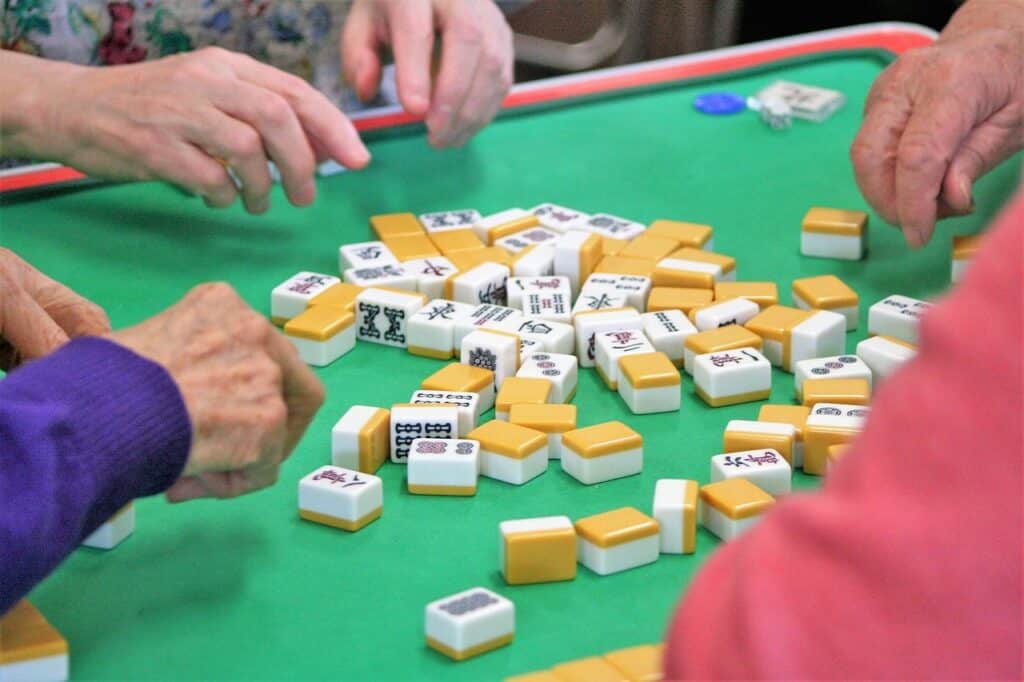
Makruk (Thailand)
- How to Play: Makruk is played on an 8×8 board, similar to international chess, but uses different pieces and rules. Each player begins with one king, one queen (though much weaker than in Western chess), two bishops, two knights, two rooks, and eight pawns. The objective is similar to Western chess: to checkmate the opponent’s king. However, the movement of the pieces and the promotion rules differ.
- Fun Fact: Makruk is not only considered more strategic and challenging than international chess, it’s also said to reflect the military strategy of ancient Thai warfare. The game’s resurgence in popularity is attributed to its prominence in cultural preservation efforts in Thailand.
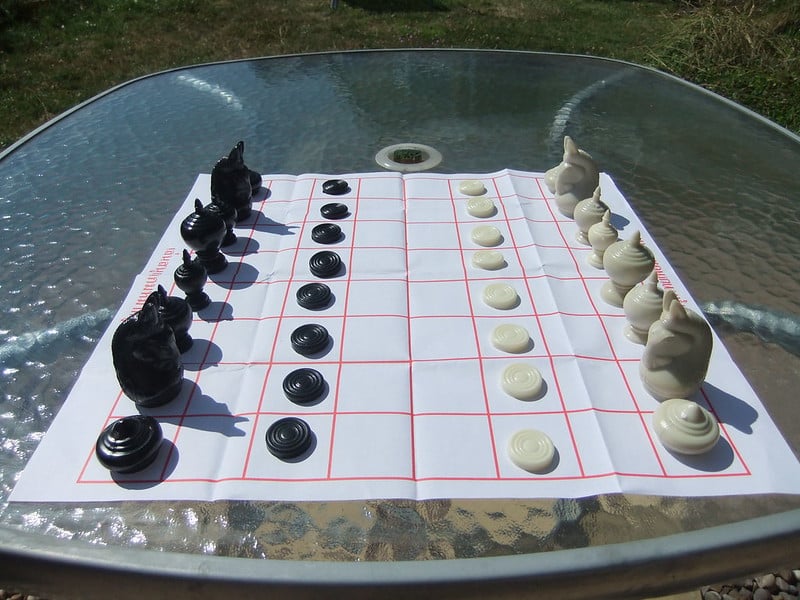
Mancala
- How to Play: Mancala is a family of board games played around the world, particularly popular in Africa and parts of Asia. The game involves a board with rows of pits, each containing a certain number of seeds or stones. Players take turns picking up all the seeds from one of the pits on their side of the board and distributing them, one by one, in subsequent pits in a loop. The strategy involves capturing the seeds in specific pits based on the count and placement.
- Fun Fact: The term “Mancala” comes from the Arabic word “naqala” meaning literally “to move.” There are hundreds of variants of Mancala played throughout the world, and it is believed to be one of the oldest known board games, with origins tracing back thousands of years.
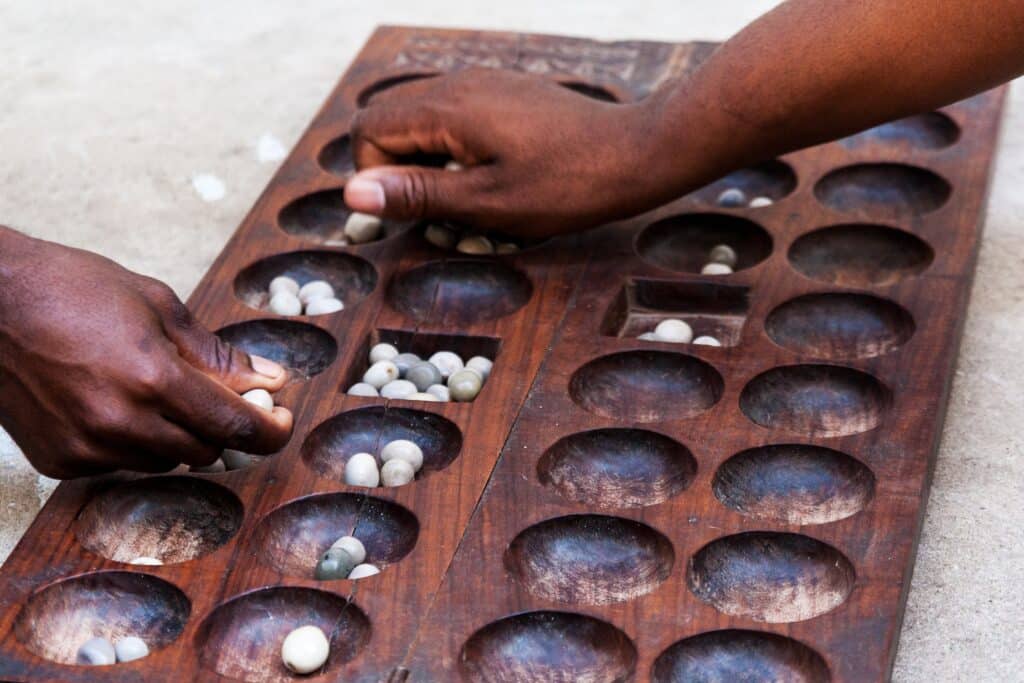
Netball
- How to Play: Played mainly by women, netball involves two teams of seven players each, who pass a ball to shoot it into their opponent’s net, without moving with the ball.
- Fun Fact: Netball, originally known as “women’s basketball,” had its origins in England in the late 19th century.
Palo Sebo (Philippines)
- How to Play: This traditional Filipino game involves players attempting to climb a greased bamboo pole to reach a prize at the top. It’s also written as palo-sebo or simply palosebo.
- Fun Fact: Palo Sebo is usually played during festive celebrations, and the slippery pole often leads to a series of comedic attempts, adding to the entertainment for spectators.

Petanque (France)
- How to Play: The goal is to toss or roll hollow steel balls as close as possible to a small wooden ball called a cochonnet while standing inside a circle.
- Fun Fact: Petanque was created as a simpler version of the game of boules, to accommodate a French player who had rheumatism.

Sepak Takraw
- How to Play: Originating from Southeast Asia, Sepak Takraw is like volleyball but players use their feet, head, knees, and chest to hit a rattan ball over the net.
- Fun Fact: Sepak Takraw is highly popular in Malaysia and Thailand and is known for its spectacular acrobatic volleys and spikes.

Sipa (Philippines)
- How to Play: Sipa involves kicking or tossing a washer covered with colorful threads using a foot to keep it airborne. The goal is to prevent the washer from touching the ground for as long as possible. It’s an older version of Sepak Takraw and closely related to it.
- Fun Fact: “Sipa” in Tagalog translates to “kick.” The traditional version of this game used a small rattan ball, and it was once the national sport of the Philippines.
Skittles
- How to Play: Skittles is a traditional European lawn game in which players throw wooden balls or discs to knock down skittles (pins). There are many regional variants of the rules, but the primary objective remains the same: knocking over as many pins as possible with a thrown ball.
- Fun Fact: Skittles is the ancestor of modern bowling and has been played in Europe since ancient times. The game was once a popular pub game, and in some places, it still is, especially in Britain where it remains a competitive pub sport.
Snooker
- How to Play: Played on a rectangular table with pockets at each corner and in the middle of each long side, players use a cue to pot balls in a specific order.
- Fun Fact: Snooker was invented by British Army officers stationed in India in the latter half of the 19th century.
Solitaire
- How to Play: Solitaire, primarily known as a card game played solo, involves arranging a deck of cards in a specific layout and then moving them according to certain rules to achieve order. The most common version, Klondike, involves stacking cards in descending order and alternating colors, and suit stacks in ascending order.
- Fun Fact: Solitaire became hugely popular globally as it was included as a standard game on many computer systems, starting with early versions of the Windows operating system. Its presence on computers helped many users become familiar with graphical user interfaces.
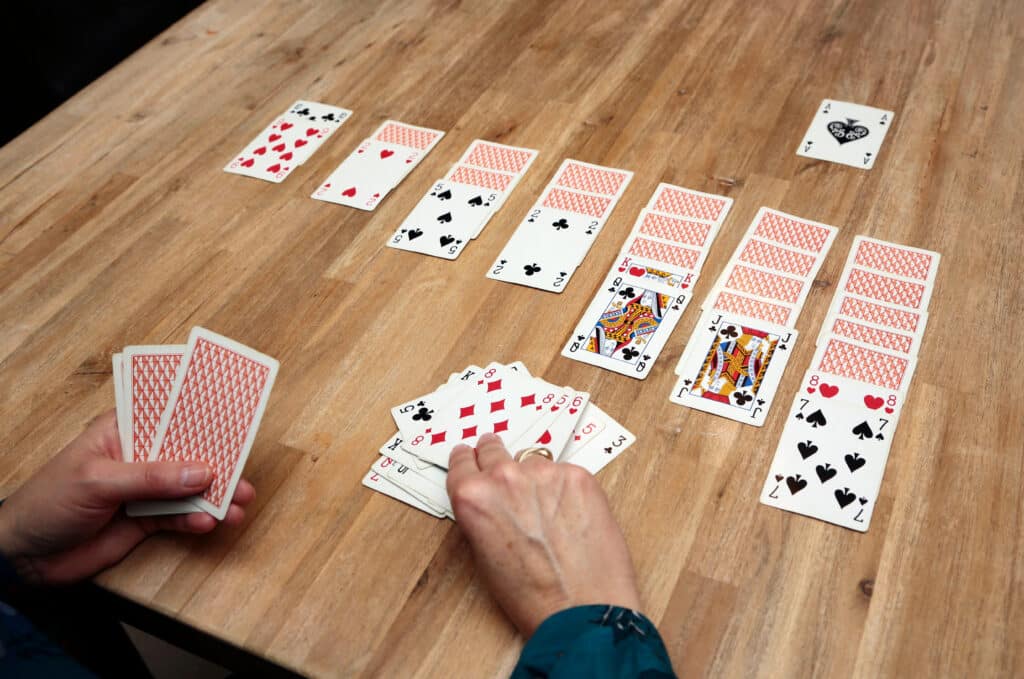
Table Tennis
- How to Play: A fast-paced game where players hit a lightweight ball back and forth using small paddles over a table.
- Fun Fact: Introduced in Victorian England as an after-dinner parlor game, table tennis became an Olympic sport in 1988.
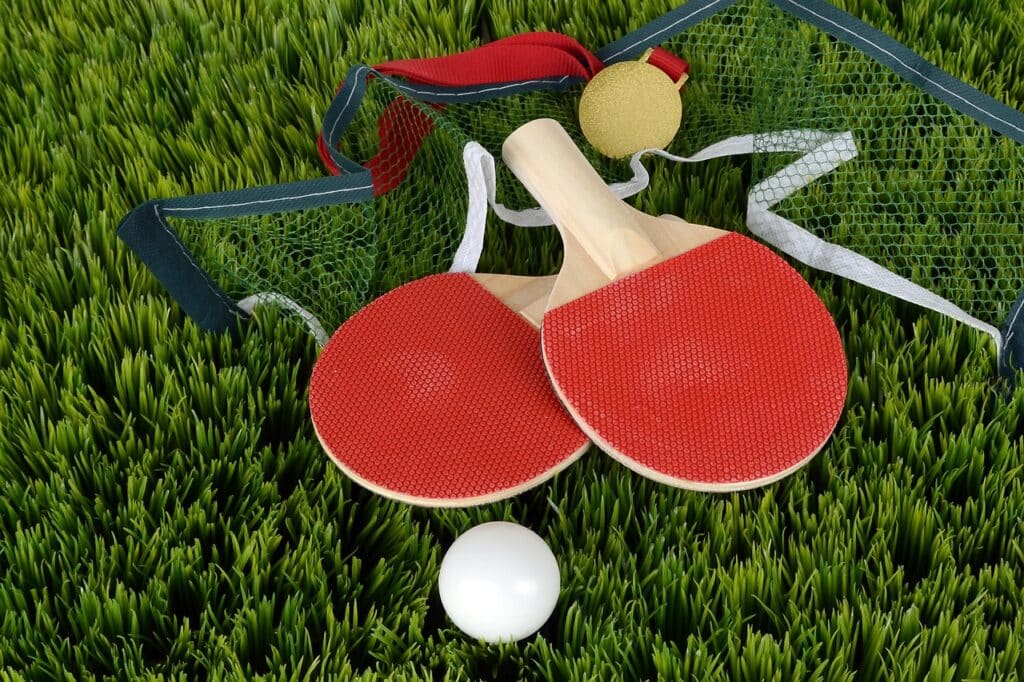
Tag
- How to Play: Tag is a simple and popular children’s game involving one or more players chasing other players to “tag” or touch them, usually with their hands. The basic rule is that one player is designated as “it” and aims to tag others, transferring the “it” status upon contact.
- Fun Fact: Tag games have been played all over the world in various forms for centuries. One variation, called “Chain Tag,” involves tagged players holding hands and working together to tag others.
Tiddlywinks
- How to Play: Players use a larger “shooter” disc (wink) to flip smaller winks into a cup placed at the center of a playing area. Each player can score points based on how many winks they can get into the cup.
- Fun Fact: Tiddlywinks is not just a child’s game; it became so competitive that in the 1950s and 1960s, it was played at universities, with a world championship that continues to this day.
Whot (Nigeria)
- How to Play: Whot is known as the “national card game of Nigeria” and has similarities to Crazy Eights. The goal? To get rid of all your cards first. Nigerian or Naija Whot features special cards that differ from a standard deck.
- Fun Fact: Whot was invented in England in the 1930s by William Henry Storey, a printer from Essex, and made its way to Nigeria from there.
Wòch (Haiti)
- How to Play: Wòch is played similarly to marbles, where players use their shooter marble to knock other marbles out of a circle drawn in the dirt or sand. The objective is to collect as many marbles as possible by knocking them out of the designated play area with precise shots.
- Fun Fact: Wòch literally means “stone” in Haitian Creole, reflecting the flexible nature of the game, which can be played with pebbles or small stones if marbles aren’t available.
Yut Nori (Korea)
- How to Play: A traditional Korean board game played during the Lunar New Year. Players throw four wooden sticks, and the way they land determines the number of moves a player can make with their pieces on the board.
- Fun Fact: Yut Nori is a game of luck and strategy, and it is a traditional belief that the outcome can predict the player’s fortune for the coming year.
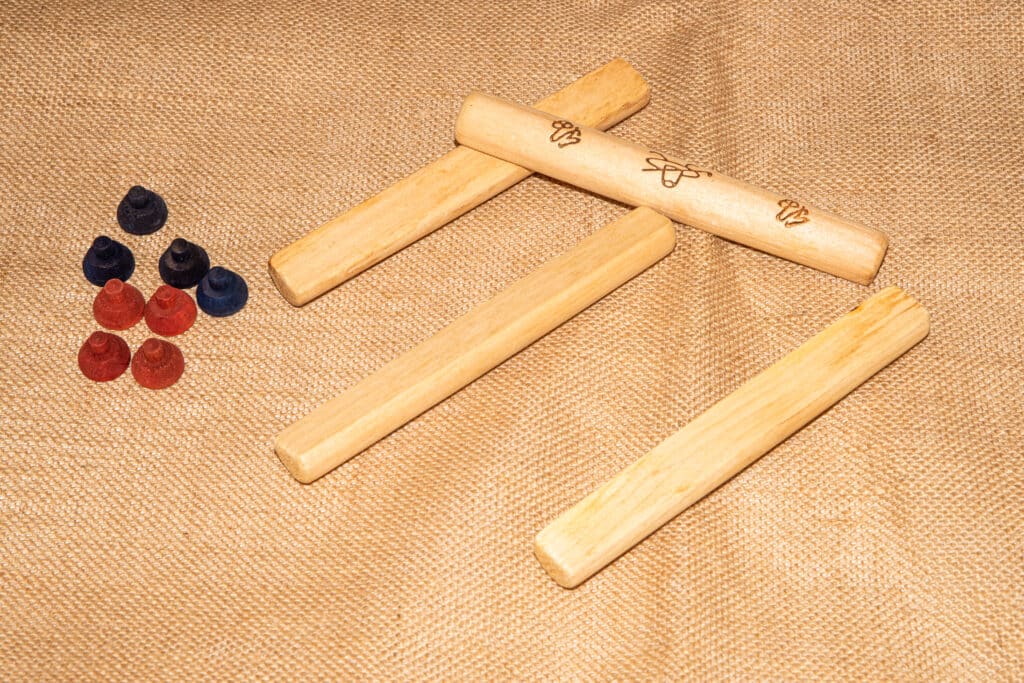
FAQ: Traditional Games
What is the most difficult board game?
Answer: Go is often considered the most difficult board game due to its simple rules yet profoundly complex strategies. Originating over 4,000 years ago in China, Go has an almost infinite number of board configurations and requires a high level of strategic foresight and adaptability, making it a challenging game for even the most skilled players.
What is the most popular card game?
Answer: Poker is arguably the most popular card game worldwide. Known for its various styles—such as Texas Hold’em, Omaha, and Seven-Card Stud—poker combines strategy, skill, and a bit of luck. Its popularity is enhanced by major competitions and televised tournaments.
What is the oldest game in the world?
Answer: The oldest game in the world is believed to be the Royal Game of Ur, which dates back to 2600 BCE. This ancient board game was discovered in the Royal Tombs of Ur in Iraq by archaeologist Sir Leonard Woolley in the 1920s. It involves elements of strategy and luck, similar to backgammon.
What is the most popular game globally?
Answer: The most popular game globally is soccer, known as football outside of North America. Millions of people play it in almost every country in the world, with a massive following both in terms of participants and spectators.
How many versions of football exist in the world?
Answer: There are several versions of football played around the world, including:
- Association football (soccer)
- American football
- Canadian football
- Australian rules football
- Gaelic football
- Rugby league
- Rugby union
Each of these games has different rules and styles of play but shares the common element of using a ball to score points against an opposing team.
Immigration has made which games popular?
Answer: Many games have spread globally due to immigration. For example:
- Carrom, which originated in the Indian subcontinent, is now popular in other parts of Asia, Europe, and North America.
- Dominoes, brought from China to Europe and later to America, has become a staple game in many Latin American countries.
- Bocce, an ancient game from Italy, has found popularity in the United States and Australia due to Italian immigrants.
What is the hardest sport?
Answer: Gymnastics is often considered one of the most complicated physical sports due to its requirement for athletes to develop high levels of strength, flexibility, balance, coordination, and endurance. Gymnastics routines cover a range of apparatus and demand precise technique and years of dedicated training.
Which games are part of physical education?
Answer: Traditional games included in physical education programs often vary by country but typically include:
- Tag games and relay races, fun games to develop speed and agility.
- Dodgeball and basketball, which enhance teamwork and hand-eye coordination.
- Soccer and softball, which are used to teach teamwork, strategy, and physical fitness.
- Jump rope and obstacle courses, which improve cardiovascular fitness and coordination.
These games not only foster physical development but also encourage social skills and teamwork among students.

